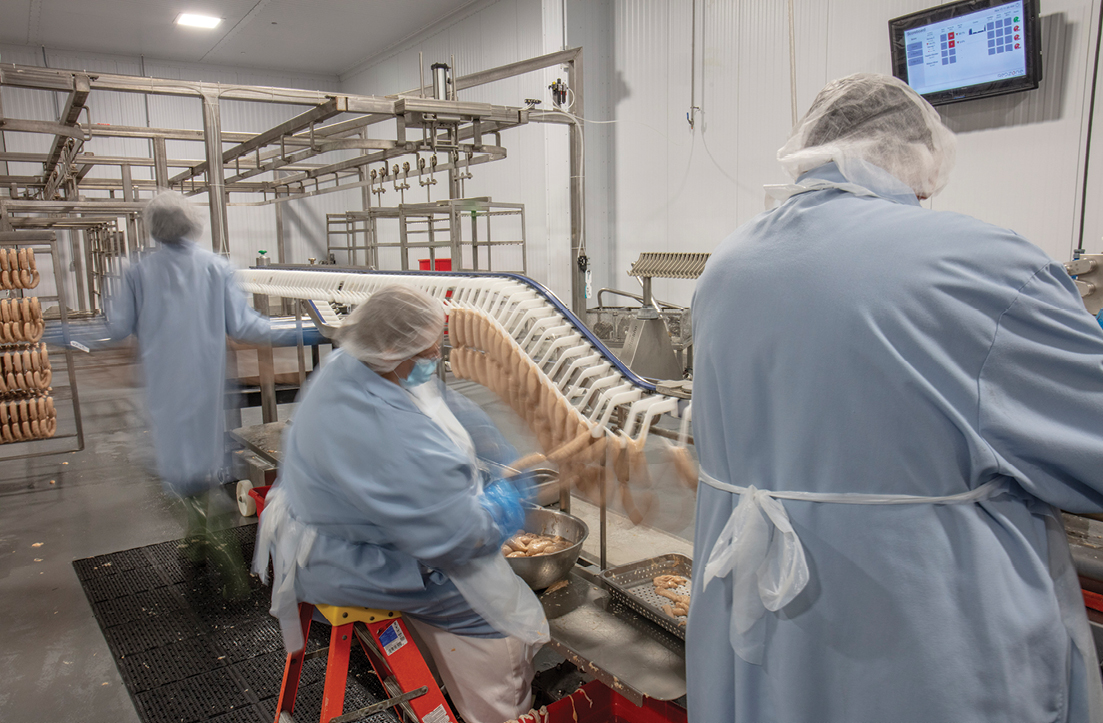The worst of the global pandemic may be over, but the repercussions of it continue to impact every facet of food and beverage processing. Remember life before March 2020? That might as well be ancient history. Welcome to the new reality of 2023:
- Freshly prepared meals delivered to our door dominate commerce channels.
- Our pets now eat better than many people who live in poverty.
- Demand for cold storage grows exponentially as consumption of perishable items skyrockets.
- Shoppers globally now expect healthy organic food options procured via fair trade.
- Plant-based food production continues to climb as people seek out meat alternatives.
- Inflationary pressures prompt companies and consumers alike to mine every available opportunity to shave costs.
The list goes on, but these six factors alone have drastically altered site selection practices in the food and beverage manufacturing sectors. Places that, prior to 2020, were not considered household names for food production are now rising to the forefront as viable options. Capital is flowing into communities on a scale not seen before; and demand for site readiness and expedited facility delivery has reached an all-time high.
Case in point: fairlife, the healthy milk alternative produced by a subsidiary of the Coca-Cola Company. This firm announced the largest investment of the first half of 2023 in U.S. food and beverage processing: a $650 million factory in Monroe County in Greater Rochester, New York.
Atlanta-based Coke is funding the deal in the Town of Webster. “Consumer demand for fairlife products is at an all-time high, and a new production facility will allow us to significantly increase capacity and deliver fairlife to even more households across the country,” fairlife CEO Tim Doelman said on May 9, noting that the firm will build a 745,000-sq.-ft. plant and hire 250 full-time workers.
Doelman tells Site Selection that fairlife considered multiple Northeast states before selecting the Rochester area. “This location offers reliable, long-term access to dairy farms across the region and great proximity to our distribution networks,” he says. “The Town of Webster has a surrounding workforce that has the relevant manufacturing and food and beverage experience we value at fairlife.”
The project is not an anomaly. Since the start of this year, 24 deals of $100 million or greater have been announced in food or beverage production in the U.S., according to the Conway Projects Database, a product of Site Selection magazine publisher Conway Data in Atlanta. These corporate facility projects are spread across 18 states and can be found in every major region, from Fremont, Nebraska, to Saluda, South Carolina. Overall, there were 318 corporate facility projects in food and beverage processing in the U.S. during the first half of 2023.
Southern Hospitality Rules
Quantifying the differences between communities has never been an exact science, but a Greenville, South Carolina–based firm has put together a matrix of factors that it says comes close. Global Location Strategies (GLS) shared the results of its study with Site Selection. If the findings of the first-ever Food Manufacturing Rankings are any indication, expect to see a lot of Southern cooking in the future. Thirteen of the 15 MSAs listed below are in Southern states. GLS used over 100 separate data factors to derive its list of the top five locations among large MSAs, medium MSAs and small MSAs:
Large MSAs
- Charlotte-Concord-Gastonia, NC-SC
- Atlanta-Sandy Springs-Alpharetta, GA
- Kansas City, MO-KS
- Raleigh-Cary, NC
- Nashville-Davidson-Franklin, TN
Medium MSAs
- Savannah, GA
- Huntsville, AL
- Greensboro-High Point, NC
- Spartanburg, SC
- Lexington-Fayette, KY
Small MSAs
- Bowling Green, KY
- Warner Robins, GA
- Gainesville, GA
- Lafeyette-West Lafayette, IN
- Blacksburg-Christiansburg, VA
Factors included demographics, educational attainment, workforce data, industry data, logistics infrastructure, regulatory environment, and overall attraction and quality of life. Sources of data included the American Community Survey; CoStar; FBI; JOBSEQ; FDI Markets; Tax Foundation; U.S. Bureau of Labor Statistics; National Center for Education Statistics; County Health Rankings; U.S. Energy Information Administration; and other reputable sources. The GLS study does not include beverage processing in its study.
“From a macro-economic perspective, COVID-19 accelerated production of food,” says Tess Fay, Principal and VP of Location Intelligence for GLS. “One of the things we found in our study is that the capital investment per job increased in this sector. Spending went from $0.46 million per job pre-COVID to $0.65 million per job post-COVID. There was still an increase in investment even after accounting for building products cost increases; and there was still not a corresponding decrease in the number of jobs. The level of hiring in this sector has remained constant.”
From Port City to Corvette Land
Overall No. 1-ranked Savannah, with a cumulative score of 92.37 in the GLS study, was the only metro area to score above 90. Trip Tollison, president and CEO of the Savannah Economic Development Authority, says food production really began to take off in Savannah around seven years ago after the federal government decided it would no longer require refrigerated cargo from South American produce shippers. “Prior to that ruling, fruit coming from South America had to arrive at port north of Philadelphia,” he says. “They were worried about products going bad in the Southern heat. The Port of Savannah went out and recruited that cargo out of South America when the rule ended. We adopted a new strategic plan in 2018-2019, and we made food processing a priority then.”
Ron Bunch, president and CEO of the Bowling Green Area Chamber of Commerce in Kentucky, says it came as no surprise to him that Bowling Green was named the No. 1 Small MSA in the country for food manufacturing. “Bowling Green recently was recognized as one of the top two cities in the country for overall manufacturing,” he says of the city that produces all Corvette sports cars for General Motors. “Twenty percent of jobs in this region are in manufacturing. When you look at the key factors — markets, logistics and suppliers — we excel in all of them. We have been the fastest-growing city in Kentucky for over a decade; and we continue to grow our workforce.”
Bowling Green proved its food manufacturing prowess last year when it landed a major project by Tyson Foods, says Bunch. “I presented eight different site configurations to Tyson when they were looking for the best place to open a bacon plant. When they asked questions, we had answers. They knew we had the labor. When we got into the mechanics of the deal, they saw that we were solution focused.”
Tyson Foods broke ground in February 2022 on a $355 million, 400,000-sq.-ft. bacon plant that will employ 450 people in Bowling Green.
IN Dogged Pursuit of Excellence

Photos courtesy of Zweigle’s Inc.
 Spend five minutes talking with Julie Camardo and you quickly learn that she is passionate about two things: her family and her hot dogs.
Spend five minutes talking with Julie Camardo and you quickly learn that she is passionate about two things: her family and her hot dogs.
A fifth-generation leader of family-owned hot dog company Zweigle’s in Rochester, New York, Camardo carries on a 143-year-old legacy that is committed to four core values: quality, accountability, caring and integrity.
After expanding in 2020, Zweigle’s today employs 65 full-time workers in the city made famous by Kodak, Xerox, and Bausch & Lomb. The founders of Zweigle’s were no less entrepreneurial. Camardo’s great-great grandparents founded the company in 1880 after immigrating from Germany. The company has grown to become one of the most beloved food brands in Upstate New York. Join the Bills Mafia for tailgating before a Buffalo Bills game and you’ll find plenty of Zweigle’s signature “white hots” and “reds” being served up.
“There is Rochester hot dog pride with our brand, so it just makes sense for us to continue to support the Rochester community,” says Camardo. “Our biggest fans are here.”
She credits Monroe County, the Greater Rochester Chamber of Commerce and Greater Rochester Enterprise with assisting the company as it has grown.
“Rochester works hard to support local businesses,” she says. “We don’t plan on going anyplace else.”

